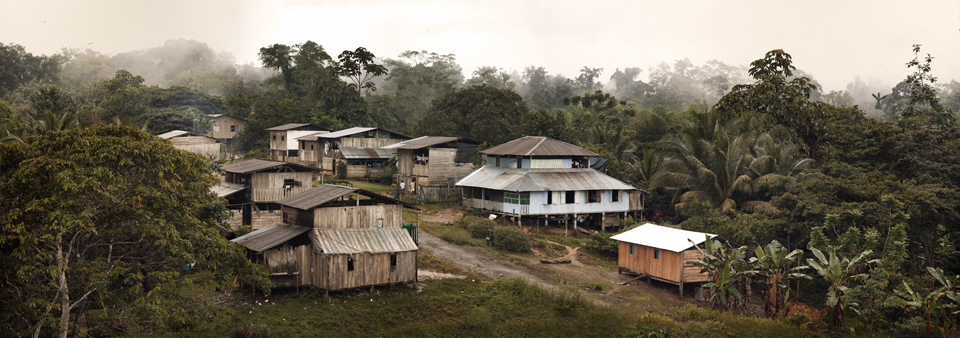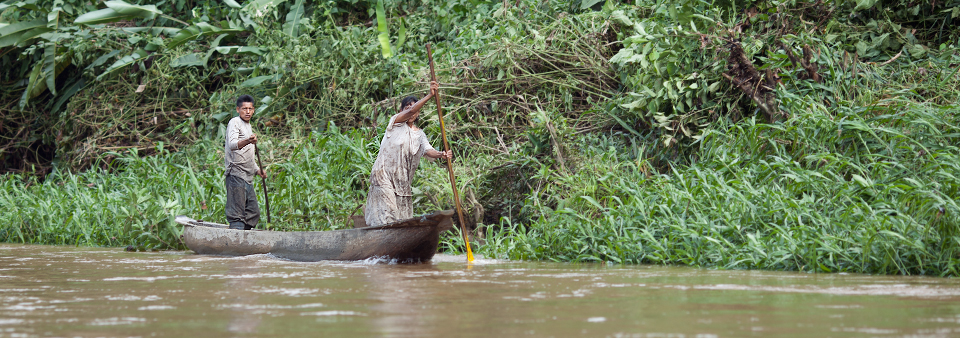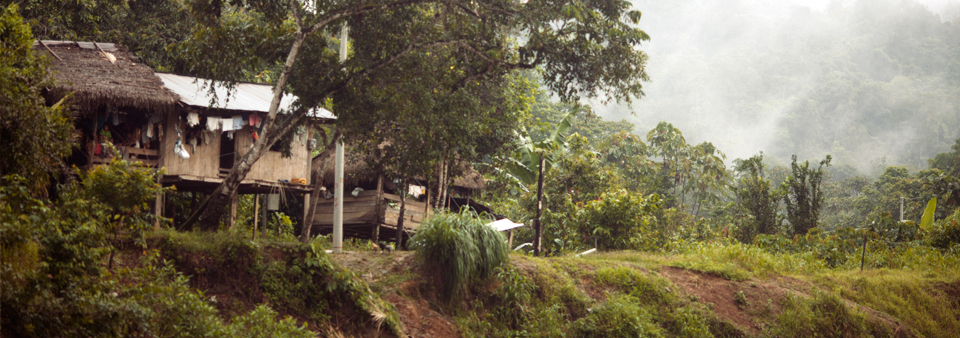CONTEXT

The municipality of Eloy Alfaro, in the province of Esmeraldas, Ecuador, is a tropical region with high humidity and rainfall, and temperatures of 25-28oC. It is a forested area with important biodiversity, especially plants and animals.
The river Cayapas runs throughout the municipality being a navigable river on almost its entire course, being the core of life for its inhabitants. In the region one finds the ecological reserve Cayapas-Matajé, a forest of mangroves of great flora and fauna biodiversity.
Following from the 2001 census survey, almost 55% of the population of Eloy Alfaro municipality identify themselves as Afro-Ecuadorian and 13% as Chachi, the indigenous group that predominates in the region. Although, the population census does not come with an exact breakdown of ethnicity, in the northern region of Esmeraldas, there are several indigenous groups and their settlements. The indigenous population living on the River Cayapas call themselves Chachis, and have a current population of 11,000 distributed in 50 communities, most of which are on the banks of the river.
It’s estimated that within the indigenous population, 7 out of 10 people live below the poverty line, which is almost double the national average. Within the Afro-Ecuadorian population, approximately 5 out of 10 people are considered to be poor.
The economic activities of the communities are characterised by a self-subsistence economy based on agriculture, fishing, hunting, panning for gold, and timber. They often try to improve their household incomes through seasonal migration to the cities of Quito, Esmeraldas and Guayaquil, looking for work as domestic servants, construction workers, security guards, or labourers in banana plantations and prawn farming.
The government of Ecuador is making a notable effort to establish the required infrastructure to provide power supply to the whole of the region, which is starting to be reflected in the distinct communities.
The inhabitants of these communities mainly travel along the river, in some cases by motorboat, in others by paddle, taking hours of travelling, including several days for the most distant communities to the nearest urban centre (Borbón).

One of the local harbours in Borbón. Foto: Jorge Pozuelo
The Afro-Ecuadorian community has its origins in the African slaves introduced by the Jesuit Brotherhood in the 16th and 17th Centuries, and nowadays constitutes a large community. As well as the activities already mentioned, they widened their primary economy to include timber work and small businesses with an incipient tourism industry.
Their official language is Spanish. The majority are Christians, especially Evangelists. The social organization is clearly structured, reflecting in its simple urban development with reasonable water sanitation, food handling, and environmental sanitation.

The community of indigenous Chachis follow their own laws. The Chachi law is that the primary axis of the justice system is built around an unwritten code of rules that pervades the social structure. These give form to marriage, owning land, understanding of the world, and regulate the behaviour and politics for conduct/etiquette within and between families, relationships with other ethnic groups and with any other organizational model that does not correspond to the Chachi.
The traditional authority is the Uñi Chaitarucula or Governor, the vital axis for social, cultural, and ideological reproduction of values and ethical norms. Exercising local power and authority and looking after the respected Traditional Oral Law; other authorities are the Chaitalas, helpers or secretaries of the Governor, as well as the assessor, sergeant, captain and the police. El Miruku, shamen or healer is the intermediary between their world and the world of the spirits that live in the forest.
The official language is cha’palaachi, although some of the Chachis also speak Spanish, especially the men who use it for business between the ethnic groups that also live around the banks of the river Cayapas.

Chachis navegating the Cayapas river. Photo: Jorge Pozuelo
The homes of this ethnic group have one room at a height of 3 metres above the ground (to avoid reptiles and possible river floods) with a wooden structure and a thatched roof, open to the outside world. The same room is used for cooking, sleeping and living together. The Chachis live together with their animals in the same space (especially pigs, dogs and chickens).

Chachi’s households by the river.
Water access is directly from the river or from rainfall, generally without filtering or boiling it, often not due to lack of knowledge but because of ancestral habits of drinking water directly from nature. There is no sewer system and in some communities they have basic latrines, which usually don’t respect the groundwater levels. The control of environmental sanitation is deficient, especially human waste management.
The most outstanding craft of the Chachi indigenous group are the baskets of all sizes and shapes.

Handycrafts. Photo: Maria Nieto



Ultimos comentarios